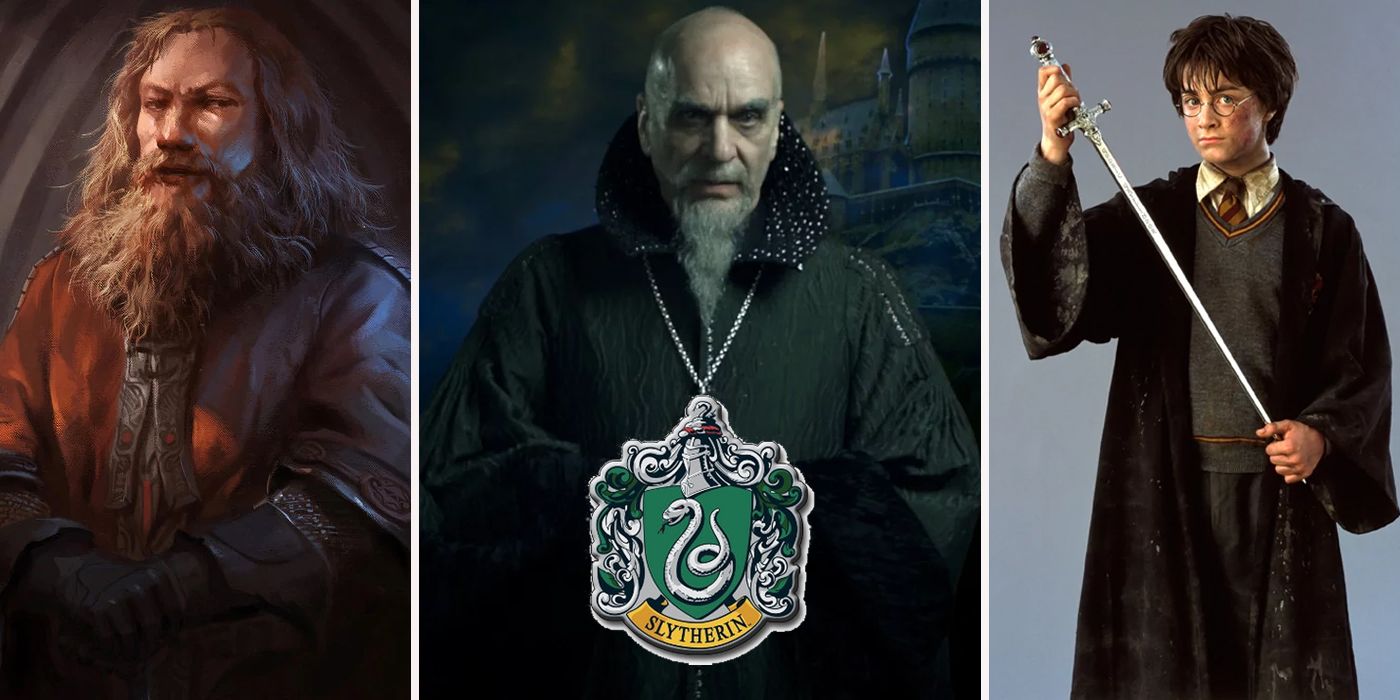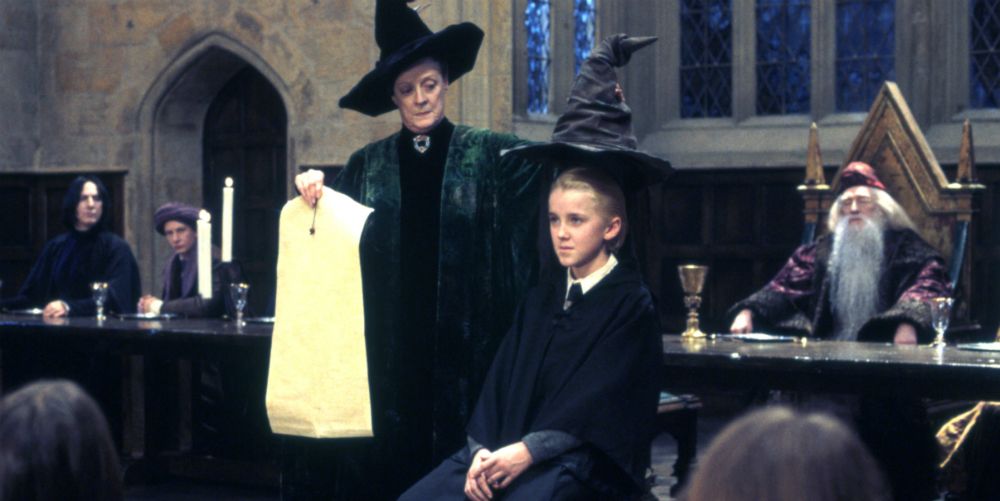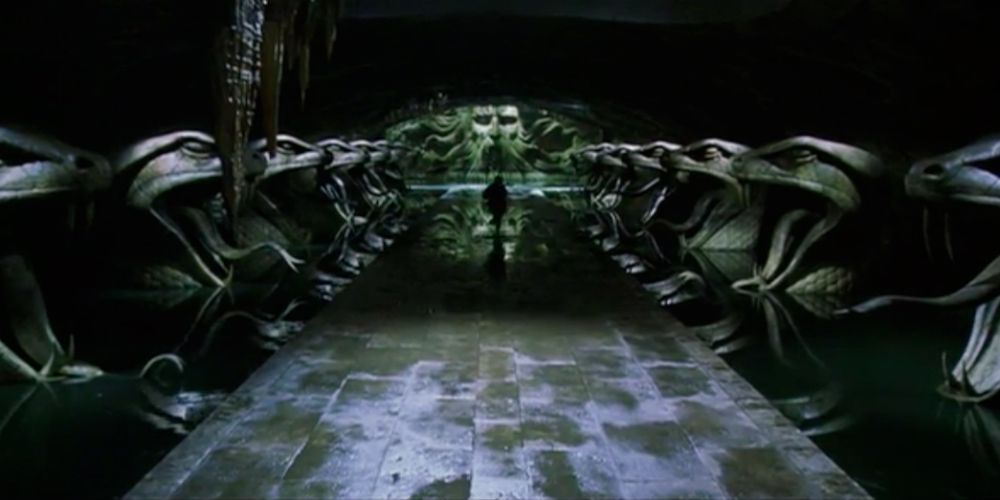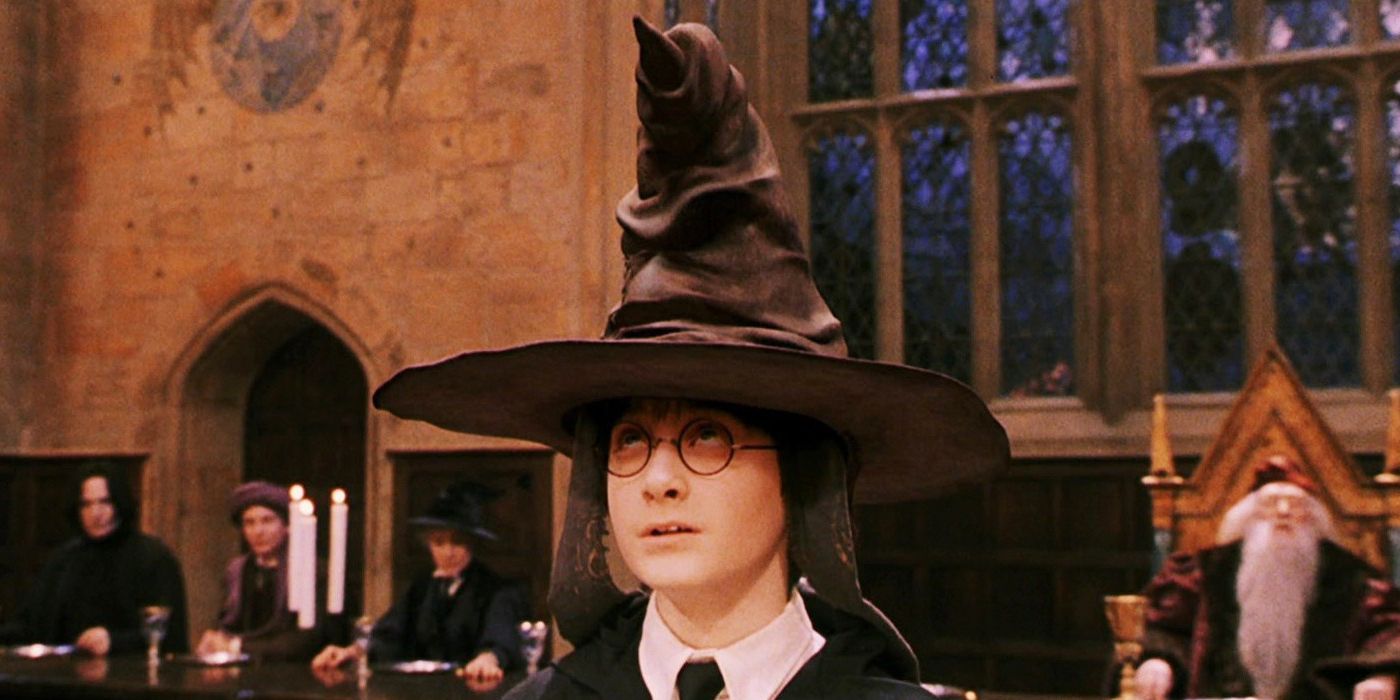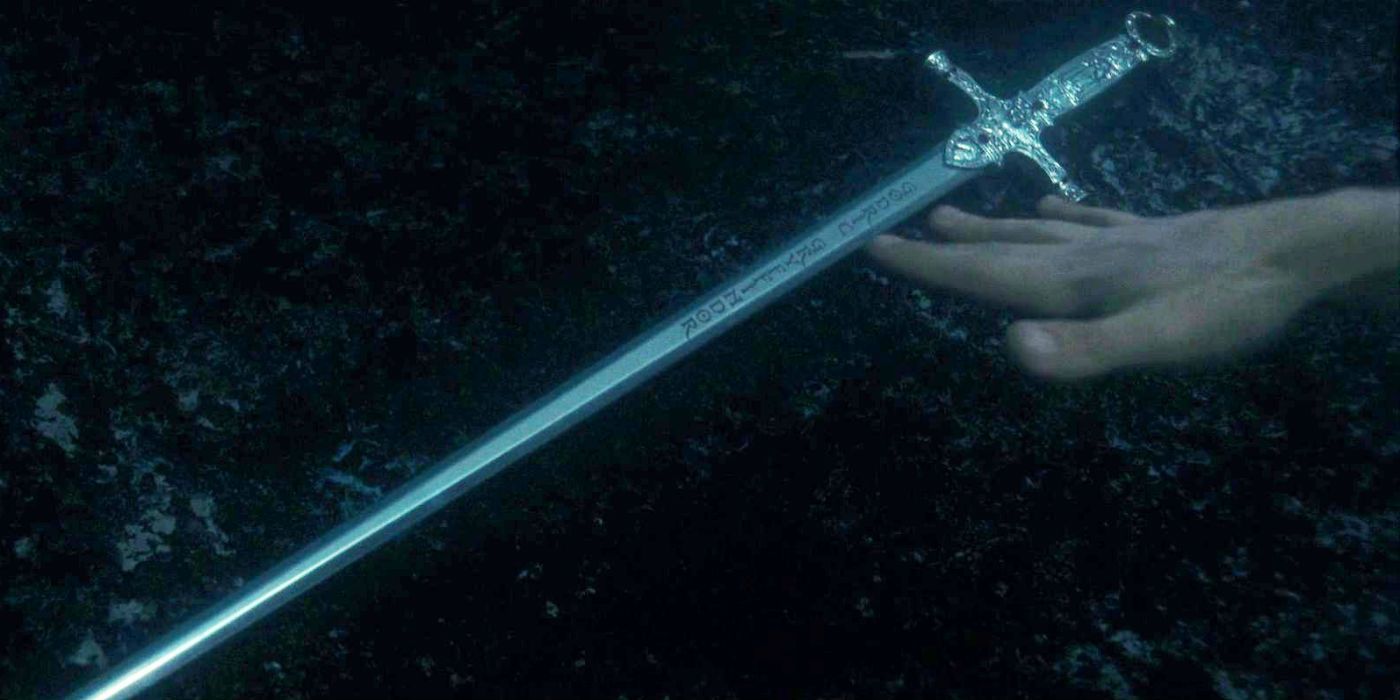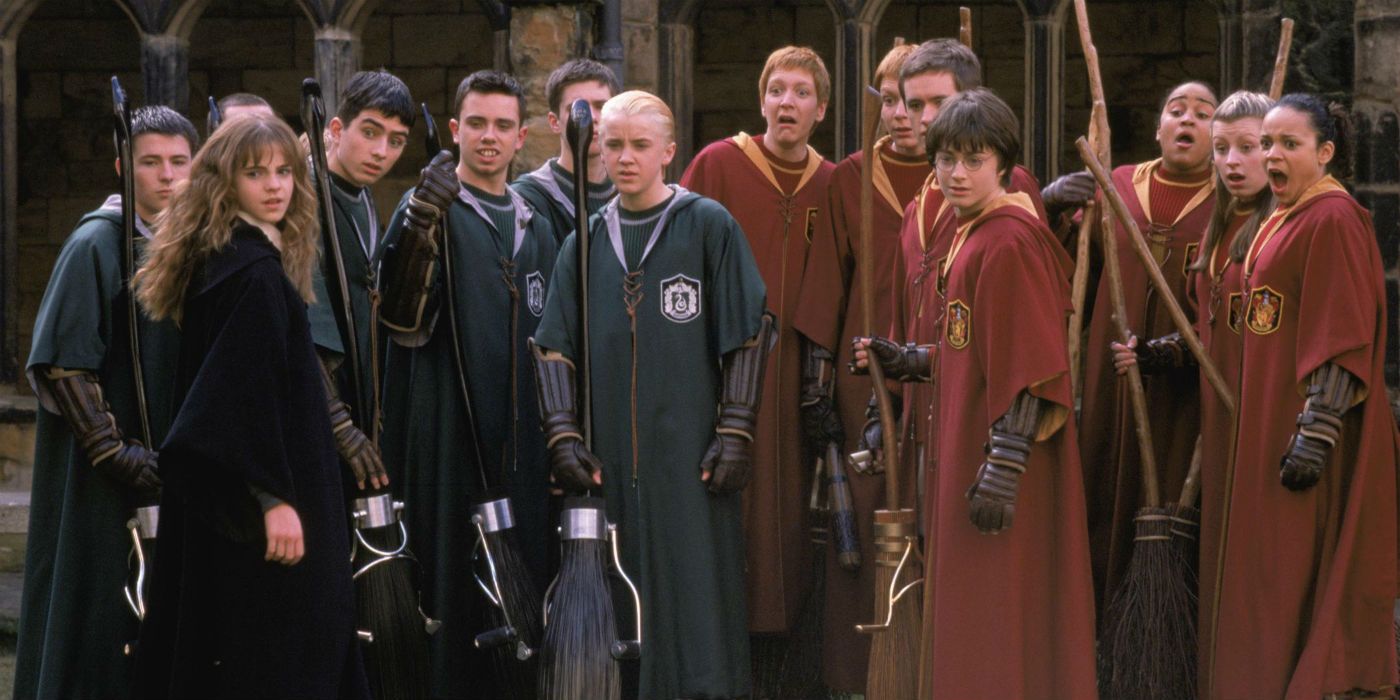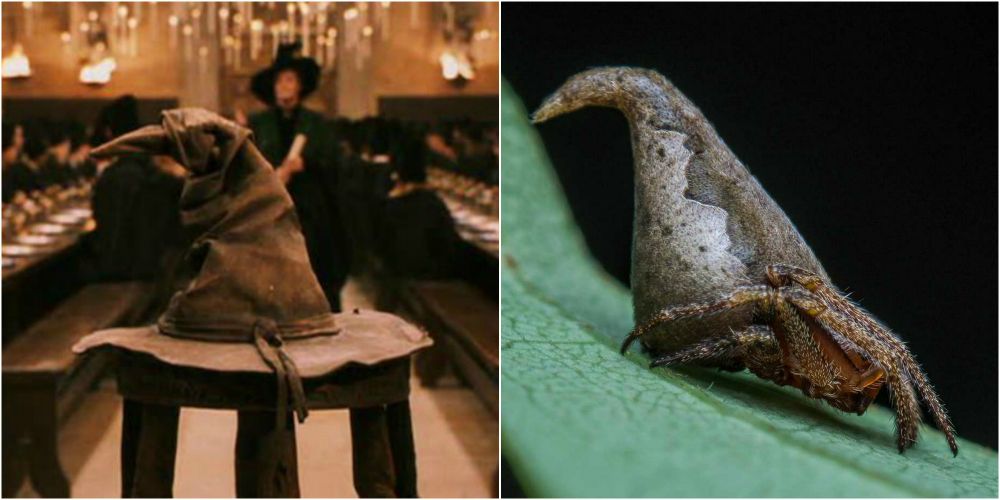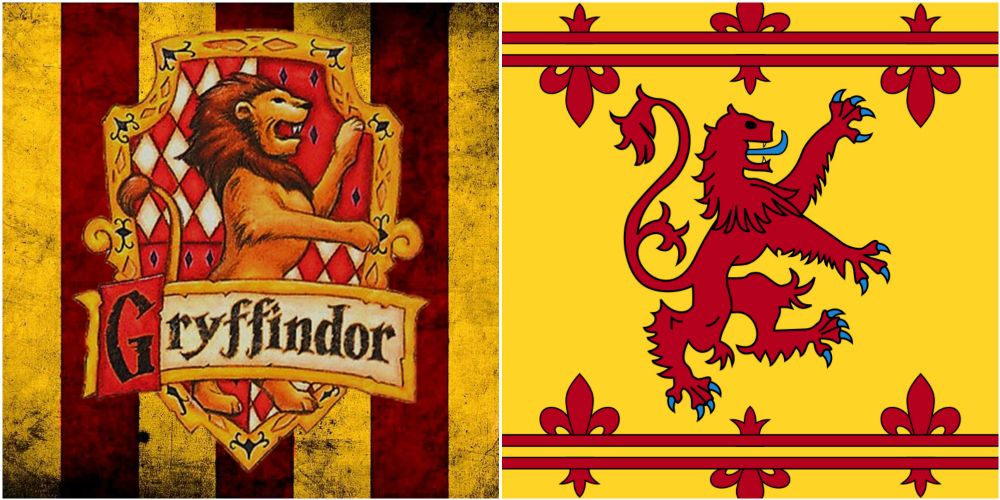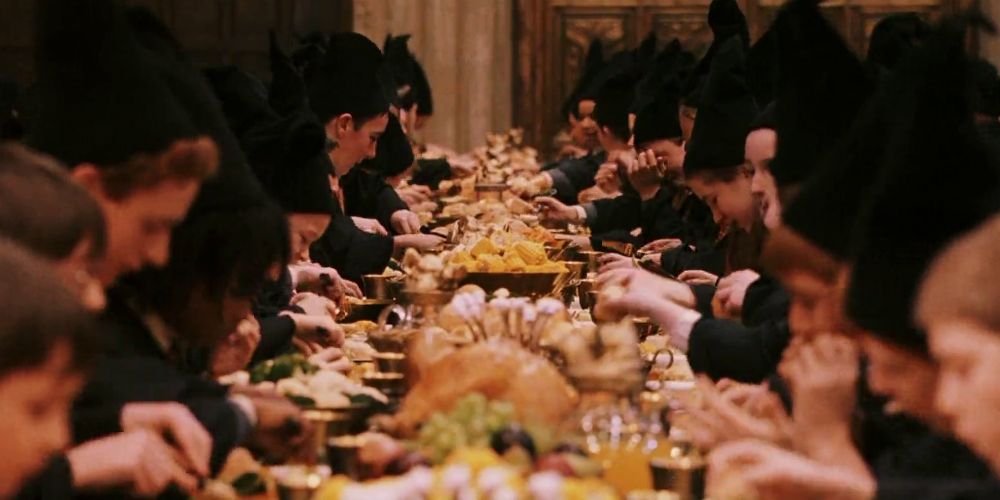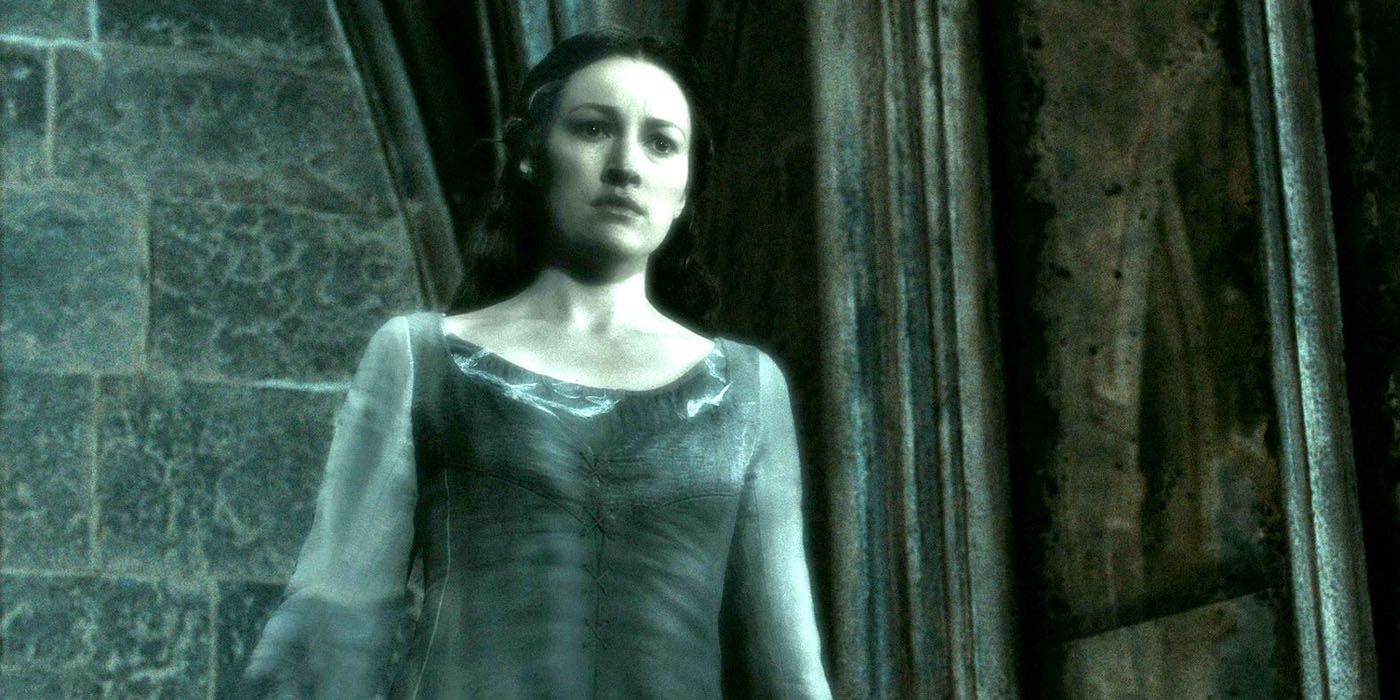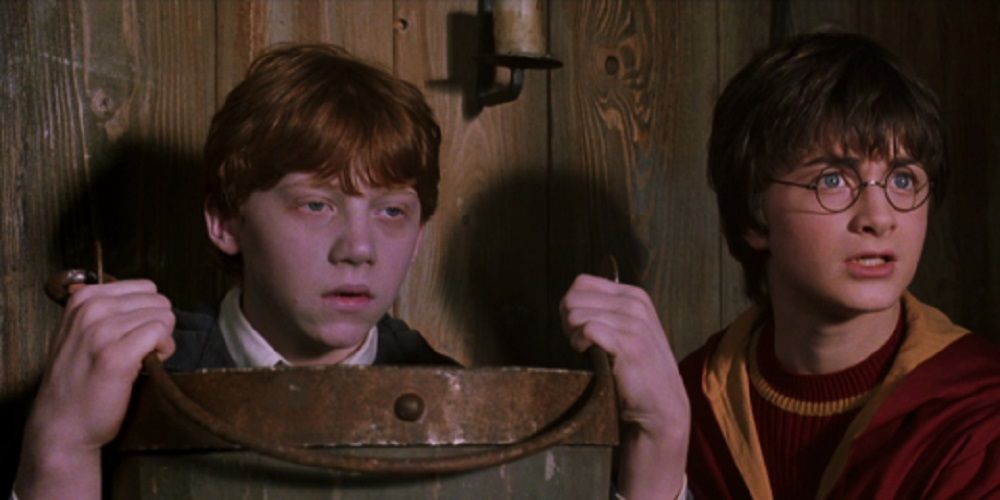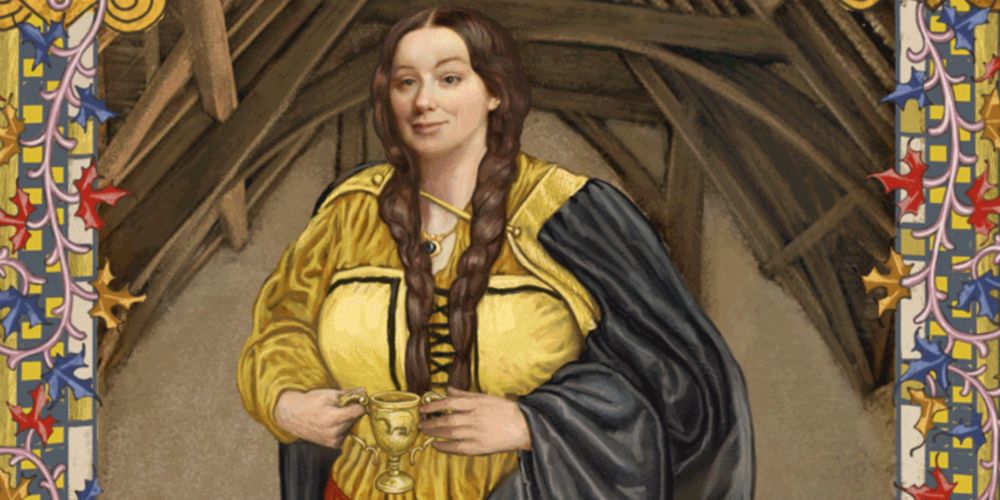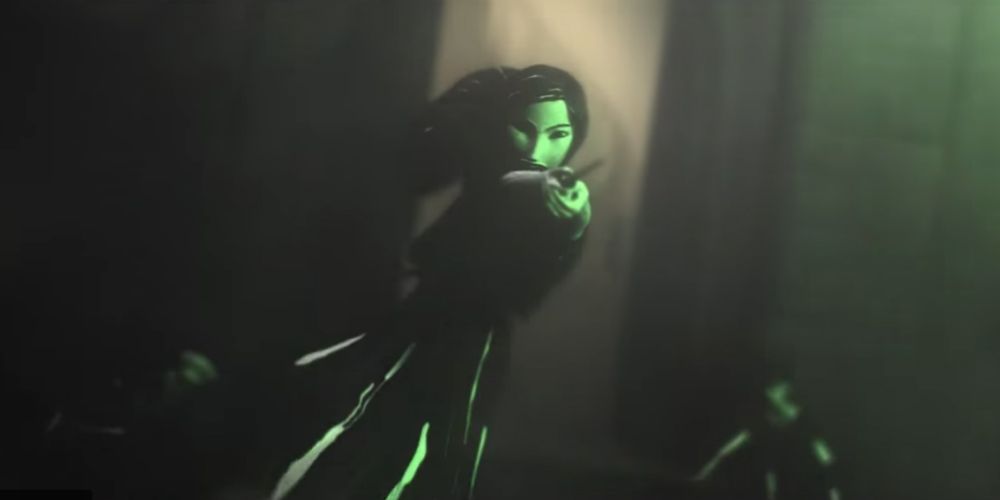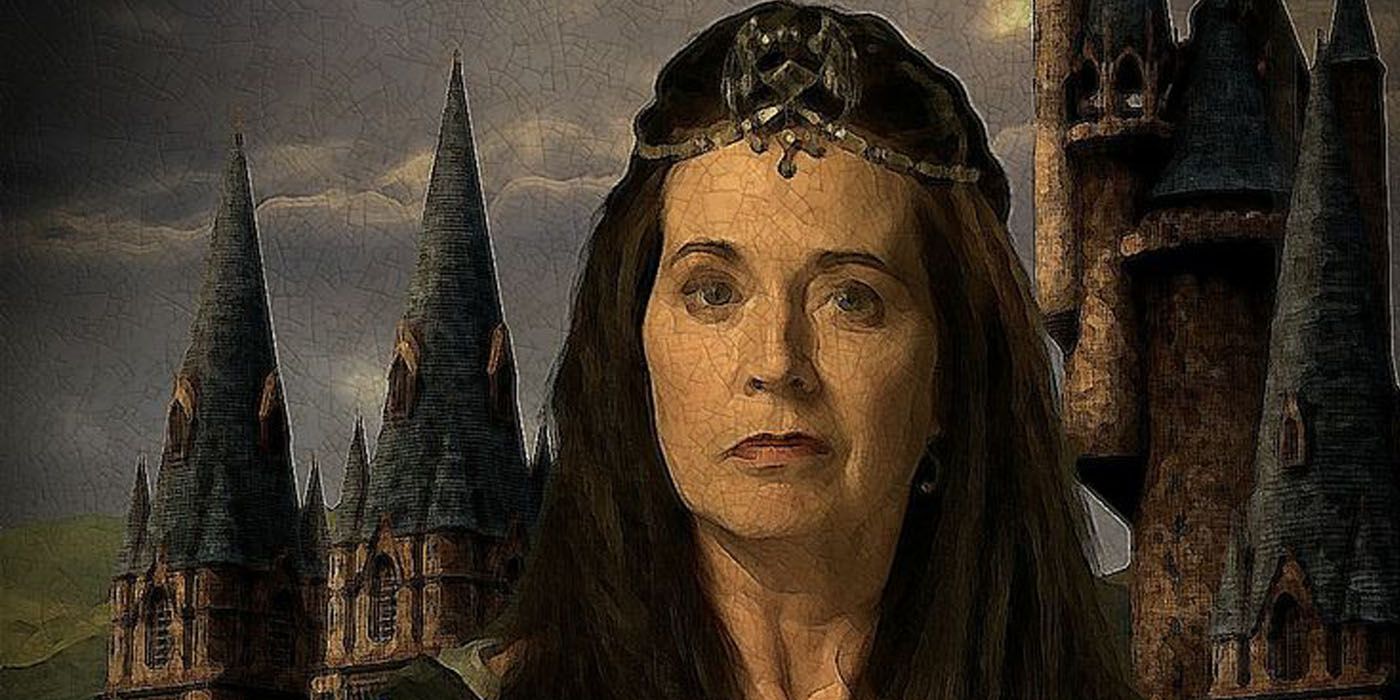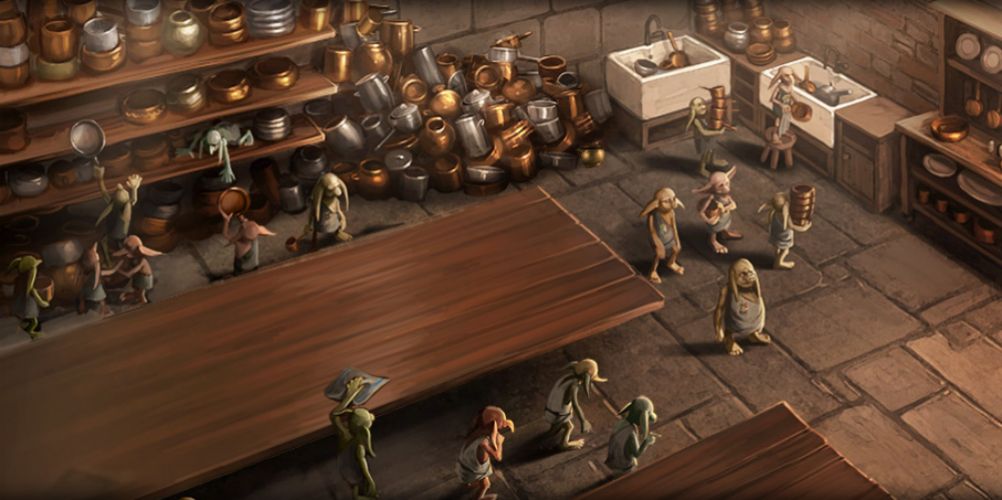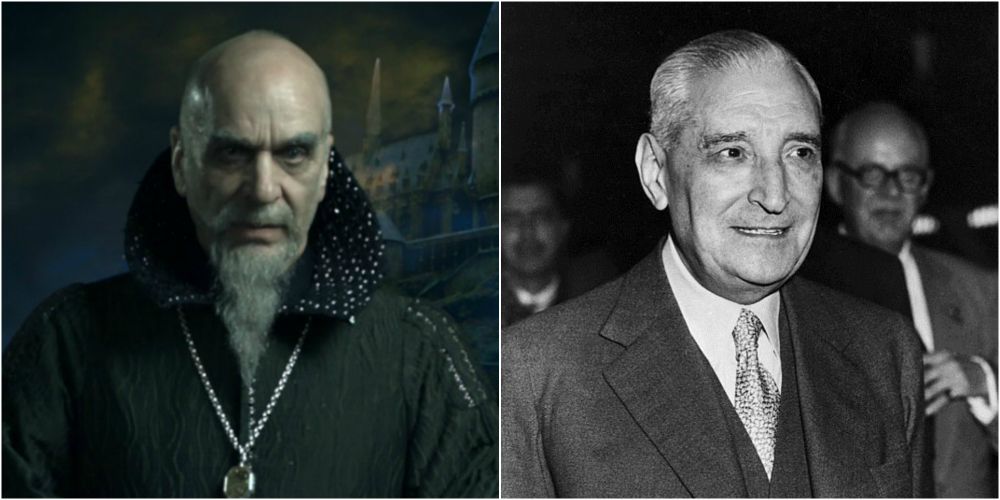Over a thousand years before the events of Harry Potter, four of the brightest witches and wizards of the time came together and decided to build Hogwarts School of Witchcraft and Wizardry. These four founders were Salazar Slytherin, Godric Gryffindor, Helga Hufflepuff, and Rowena Ravenclaw and what they accomplished together was no small task. They built the school from nothing and did it while witches and wizards were widely persecuted.
Even though they didn’t always see eye-to-eye, the Hogwarts founders worked together in harmony for years; however, the discord between them grew and the Hogwarts Four became the Hogwarts Three when Slytherin decided to make his dramatic exit. You might assume that Slytherin was the only founder with a dark past, with his preference for pure-bloods and his plot to unleash a bloodthirsty basilisk on unsuspecting students, but each of the founders made some regrettable decisions in their time. Even Hufflepuff, who was known for her altruism and kindness, had some skeletons in her closet. Despite their misdeeds, their legacies live on through their houses and the beloved school they built together.
Here are 15 Things You Didn't Know About The Founders of Hogwarts.
15. The Sorting Hat Thinks The Founders Were Wrong To Divide Students
In what seemed like an uncharacteristically somber speech in The Order of the Phoenix, the Sorting Hat had a new song in which it told the tale of the four founders. In the song, the Hat speaks of how close Slytherin and Gryffindor were, a friendship that was only matched by the bond between Hufflepuff and Ravenclaw.
The song implies that when Hogwarts was originally founded, the founders were not selective when it came to choosing the type of students they would teach. It was only after Ravenclaw, Slytherin, and Gryffindor became more picky about who they allowed in their houses that the harmony between the four houses began to deteriorate. According to the Hat, only after this division did the houses turn on each other. Though the Hat proceeds to sort the students, saying that it is condemned to do so, it also says that splitting the students up is wrong.
14. Slytherin Intended To Use The Chamber Of Secrets As A Classroom
Despite what you think about Salazar or his house, you have to be a little impressed that Slytherin managed to create a massive chamber without his fellow founders knowing about it. The best wizards and witches of the time ran Hogwarts when he was building it, but presumably none of the other founders suspected anything, despite the growing rift between them.
Interestingly, Slytherin’s original intended use for the chamber was a little less sinister (though not by a lot). The Chamber of Secrets entry on Pottermore suggests that Slytherin may have constructed the chamber to be used as a “place in which to instruct his students in spells of which the other three founders may have disapproved,” which basically means Dark Arts spells. While the chamber looks like it was made to accommodate a basilisk, it bears noting that the design of the chamber makes it ideal for formal dueling.
The Sorting Hat Originally Belonged To Gryffindor
According to Pottermore, the legendary Sorting Hat once belonged to Godric Gryffindor. Some fans have speculated that the hat was originally a regular wizard’s hat, one that Gryffindor frequently wore. Once the plans for establishing Hogwarts were underway, the four founders combined their efforts and enchanted the hat to take on the daunting task of sorting each of the school’s students.
The Sorting Hat is one of the Wizarding World’s most clever enchanted artifacts, which is unsurprising since it was enchanted by the smartest and most gifted witches and wizards in Wizarding history. As J.K. Rowling explains, “It literally contains the intelligence of the four founders, can speak (through a rip near its brim) and is skilled at Legilimency, which enables it to look into the wearer's head and divine his or her capabilities or mood.”
12. Godric Used The Sword Of Gryffindor Against Muggles
Gryffindor commissioned a goblin, and not just any goblin, but the king of the goblins, Ragnuk the First, to make the Sword of Gryffindor. Like the Sorting Hat, the sword is another legendary magical artifact. As fans of Harry Potter know, the sword will materialize for Gryffindors who prove themselves worthy. Rowling implies that it’s possible Gryffindor was inspired by the myth of Excalibur when he asked Ragnuk to cast this particular enchantment on it.
Fans have often wondered why a wizard would need a sword when he has a wand, which would arguably be far more practical in a duel. Rowling provided an answer on Pottermore, saying that in the time before the International Statute of Secrecy was put into effect, wizards wielded swords in order to defend themselves against muggles, presumably muggles who were persecuting magical folk.
11. Slytherin And Gryffindor Weren’t Always Rivals
A notable string of charged Slytherin and Gryffindor rivalries (Grindelwald and Dumbledore, Voldemort and Harry, Snape and James) started with the founders of the two strong-willed houses. Based on what we learned from the Harry Potter books, it seems like every generation has their own intense Slytherin and Gryffindor rivalry. Interestingly, the Sorting Hat says that Slytherin and Gryffindor were good friends when they founded Hogwarts, but as time wore on and Slytherin became more selective in his admission process, their friendship suffered.
Their ideologies tore them apart, namely Slytherin’s prejudice against any wizard who wasn’t a pure-blood. That said, the Pottermore Slytherin acceptance letter says that the two wizards were more alike than we think, noting that Slytherin and Gryffindor often favored the same kinds of students. The letter also says that the two houses are opposite sides of the same coin, which could also explain why they clashed so fiercely.
10. A New Species Of Spider Was Named After Gryffindor
In 2003, the Oxford English Dictionary added the word “muggle” to their dictionary. This was six years after the publication of the first Harry Potter book. It was one of the many markers of how Harry Potter had infiltrated the mainstream. Earlier this year, the OED also added the word “quidditch” to their dictionary, which many consider the authority on the English language. But Harry Potter has left its mark on the mainstream in another equally awesome way.
In 2016, a group of Mumbai researchers found a new spider in Karnataka that bore a strong resemblance to the Sorting Hat. Some of the researchers were big Harry Potter fans, so, naturally, they named the spider Eriovixia gryffindori after the original owner of the Sorting Hat, Godric Gryffindor.
9. The Founders Represent Different Parts Of The United Kingdom
The Harry Potter books, rich as they are, lend themselves to obsessive fan analysis. One popular theory about the four founders and their respective houses is that they’re based on different parts of the United Kingdom. Much of the theories about the founders and their origins come from the Sorting Hat’s speech in The Goblet of Fire. During Harry’s fourth year, the Sorting Hat describes the founders as follows: “Bold Gryffindor, from wild moor, Fair Ravenclaw, from glen, Sweet Hufflepuff, from valley broad, Shrewd Slytherin, from fen.”
Fans have almost unanimously taken this to mean that Ravenclaw is from Scotland, Hufflepuff is from Wales, and Slytherin is from East England. There has, however, been some disagreement about Gryffindor’s birthplace. Some believe he’s also from Scotland since the Gryffindor flag bears a striking resemblance to the Royal Flag of Scotland, but there’s also compelling evidence from the books that suggests Gryffindor is from a West Country village in England.
Hufflepuff Was The School’s Martha Stewart
Each of the founders excelled at a specific skill. Ravenclaw was a genius of magical architecture, Gryffindor was the most accomplished duelist of his time, and Slytherin was a master Legilimens. Helga Hufflepuff was highly skilled in charms, especially food-related charms. This isn’t all that surprising since the Hufflepuff common room entrance is right next to the Hogwarts kitchens.
Given her knack for food-related charms, it has been theorized that Hufflepuff’s cup (which was later turned into one of Voldemort’s Horcrux’s) was one of the first magically enchanted items used to help House Elves move massive feasts from the kitchens to the Great Hall.
It’s also said that Hufflepuff created the menus for the Hogwarts meals. Her recipes were so good that many of them are still used to this day.
7. Ravenclaw Died of A Broken Heart
Rowena Ravenclaw’s end was a tragic one. It’s said she died of a broken heart that was caused by the loss of her daughter, Helena, who would eventually become the Ravenclaw house ghost, the Grey Lady. The strain between Rowena and her daughter’s relationship began when Helena stole Rowena’s diadem, a magical artifact the Dark Lord eventually found and turned into one of his Horcruxes.
Apparently, Helena was jealous of the attention Rowena received. Granted, it must have been difficult to be the daughter of the most brilliant witch alive. So Helena ran away, taking her mother’s diadem with her. In an act that undoubtedly added to Rowena’s despair, she sent the Bloody Baron to retrieve Helena. As fans of The Deathly Hallows know, it was this act that resulted in Helena’s death. The Baron killed Helena, and her mother followed soon after.
6. J.K. Rowling Came Up With The Hogwarts Houses On An Airplane Sick Bag
Many famous authors have their own charming stories about how they created some of our most beloved stories and where they scribbled down their first inklings about our favorite characters. For example, as many people know, the idea for Harry Potter came to Rowling when she was on a delayed train travelling from Manchester to the King’s Cross station in London.
Many fans have probably also heard the story that Rowling wrote parts of The Philosopher’s Stone on napkins. According to the author, that’s a myth, and she primarily wrote her early drafts of the book in notepads. That said, she did make use of an unconventional writing surface when she was struck by the idea of the four houses and their founders. The muse came a calling when Rowling was on an airplane, so, resourceful Gryffindor that she is, she used an airplane sick bag to jot down her thoughts.
Hufflepuff Was The Most Tolerant Of The Four
Many people view the Hufflepuffs as the leftovers – the students who weren’t intelligent enough, brave enough, or ambitious enough to be placed in the other houses. This, of course, isn’t true, as Cedric Diggory exhibits each of these traits on top of the typical traits associated with Huffflepuffs – kindness, loyalty, and dedication. Rowling herself has said that Hufflepuff is her favorite house, despite personally identifying as a Gryffindor.
When the founders began to decide what kind of students they wanted in their houses, Helga Hufflepuff said, “I'll teach the lot and treat them just the same.” Unlike the other founders, Hufflepuff didn’t think students needed to have any qualifying traits to learn magic. She was guided by egalitarian principles, believing anyone who was capable of learning magic should be given the opportunity to get an education.
4. Slytherin’s Descendant Founded The North American Wizarding School, Ilvermorny
There are a lot of things that would probably make Slytherin roll in his pure-blood grave. Learning that one of his pure-blood descendants married a muggle and founded the North American Wizarding school with said muggle would probably be at the top of that list. Isolt Sayre was an Irish pure-blood who left for the New World in order to escape her cruel aunt. Isolt’s connection to Slytherin was through her mother who was of the Gaunt family, descendants of Slytherin.
A series of events that you can read about on Pottermore brought Isolt and James, her No-Maj husband, together. After they got married, they built a little cottage where they could teach their two adopted boys magic – they called it Ilvermorny. Eventually, as more wizards and witches expressed interest in Ilvermorny, the couple chose to expand their school, building a castle to accommodate more students.
Ravenclaw Was Responsible For Designing And Naming Hogwarts
Rowena Ravenclaw wasn’t called the brightest witch of her time for nothing. Much of the credit for the design of Hogwarts goes to her since the founders used her blueprints to build the castle. One of her more notable skills was magical architecture, a skill she used to create Hogwarts’ constantly changing grand staircase. Considering the size of the castle and the intricate spellwork required to create moving staircases and disappearing rooms, this was no small feat.
It’s also widely believed that Ravenclaw was responsible for naming the school of witchcraft and wizardry. In a W.O.M.B.A.T. test posted on J.K. Rowling's original website, one of the questions implied that Ravenclaw named the school after she had a dream about a warty hog leading her to the cliff by the Great Lake.
2. Helga Hufflepuff Brought the Elves To Hogwarts
While Hufflepuff will take any student and believes all students should have an equal opportunity to receive an education, her egalitarian principles don’t necessarily extend to house elves. Unlike Dobby and Winky, who get paid for their work at Hogwarts, the rest of the house elves at the school are still technically enslaved.
Rowling has said that the house elves’ servitude is a “complicated” issue. In an interview with The Leaky Cauldron crew, Rowling said, “Hufflepuff did what was the most moral thing to do at that time, and we are talking about over a thousand years ago. So that would be to give them good conditions of work. There was no kind of activism there, so no one’s going to say, ‘Here’s an idea, let’s free them. Let’s pay them.’ It was just, ‘Well we’ll bring them somewhere they can work and not be abused.’”
1. Salazar Slytherin Was Inspired By A Portuguese Dictator
While even Rowling is against stereotyping the four houses, there’s no getting around the fact that Salazar Slytherin just sounds like an evil name. Slytherin is obviously a reference to snakes, the house’s animal, but where did Salazar come from? According to Rowling, Slytherin’s first name is based on António de Oliveira Salazar, a Portuguese dictator who was the Prime Minister of Portugal from 1932 to 1968.
Rowling lived in Portugal from 1990 to 1993. Shortly after having her daughter, she moved to Edinburgh and started working on Harry Potter, but some accounts say that much of Rowling’s inspiration for the Harry Potter series, like Slytherin's name, came from her time in Portugal and that she even started working on the first novel when she was there.
--
Can you think of any other interesting facts about the founders of Hogwarts? Let us know in the comments!

